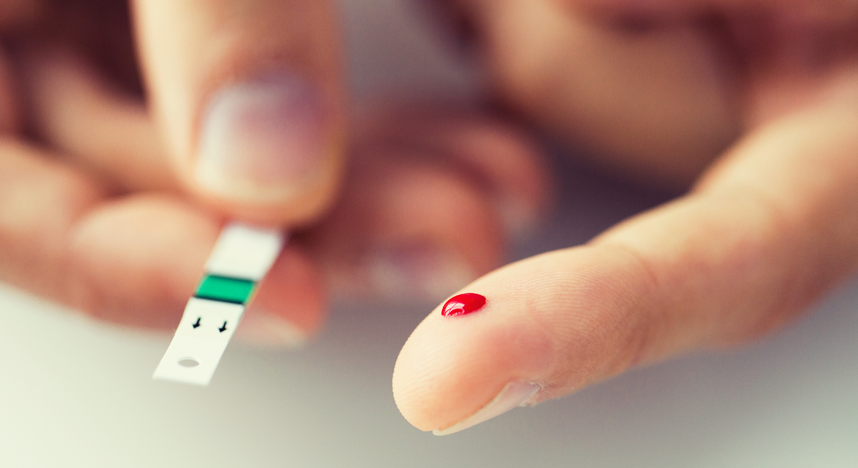Metabolic disorders occur when abnormal chemical reactions disrupt the systematic breakdown of food into usable forms of nutrients for the body. Such disorders results in an imbalance in the hormones required by one to stay healthy. Diabetes, one such metabolic disorders, is a chronic disease that occurs either when the pancreas does not produce enough insulin or when the body cannot effectively use the insulin it produces. Insulin is a hormone that regulates blood sugar. Hyperglycaemia, or raised blood sugar, is a common effect of uncontrolled diabetes and over time leads to serious damage to many of the body’s systems, like vascular dysfunction, heart failure, neuronal damage, kidney failure, and blindness.
Globally, 387 million people suffer from Diabetes; this number is estimated to be 592 million by 2035. 77% of people with diabetes live in low- and middle-income countries. In 2012, diabetes was the direct cause of 1.5 million deaths. In 2014, this number rose to 4.9 million, with 9% of adults, 18 years and older suffering from diabetes. The number of people with type 2 diabetes is increasing in every country and the greatest number of people with diabetes are between 40 and 59 years of age. 179 million people with diabetes are still undiagnosed 1,2.
India has more diabetics than any other country in the world, according to the International Diabetes Foundation, and an estimate shows that around 1 million Indians die of diabetes every year; the average of an individual to be affected by diabetes is 42.5 years3. The disease currently affects more than 62 million Indians, which is more than 7.1% of India’s adult Population4. According to the Indian Heart Association, India is the diabetes capital of the world with a projected 109 million individuals with diabetes by 20355.
Research and Treatment
Traditionally insulin therapy has been the primary treatment option for diabetic patients. The goal of insulin therapy is to maintain blood sugar levels within the stipulated range. The insulin regimen chosen is dependent on factors like the type of diabetes the patient is afflicted with as well as his/her lifestyle. Depending on its onset peak and duration, insulin types can range between rapid-acting, short-acting, intermediate-acting and long-acting7. Aggressive and often temporary use of insulin therapy at disease onset in type 2 diabetes is associated with effective glycemic control with minimal weight gain and hypoglycemia. A more timely and selective introduction of insulin replacement therapy, as β-cell function progresses, could facilitate the achievement and maintenance of normal glycemic levels and thus reduce disease-associated complications8.
Recent years have seen many advances in the field of diabetes research and treatments. Diabetes is a vascular disease that leads to many end-organ complications, including dialysis and legal blindness among driving adults. One way to treat diabetes and these symptoms are with organ transplantation. The entire cornea can be replaced, with new surgical techniques also developed to just replace the damaged portion. In addition to kidney transplantation, type 1 diabetic patients could also receive a kidney-pancreas transplant at the same time. This can remove the need for insulin administration. Other recent advances include innovations like glucose-monitoring devices, insulin pumps, and artificial pancreas. In addition to lifestyle therapy, the statin class of drugs are prescribed for diabetic patients with cardiovascular disease to manage a dangerous form of cholesterol known as LDL or low-density lipoprotein, according to the American Diabetes Association6.
Genetics and Genetic Testing of Diabetes
About 2%-5% of diabetes have underlying genetic causes. An example of this kind of diabetes, is Maturity Onset Diabetes of the Young (MODY), a monogenic form of diabetes caused by mutations in the autosomal dominant gene that disrupt insulin production. MODY1 and MODY3 are the most common forms. In contrast, common forms of diabetes like Type 1 and Type 2 have genetic causes, but no distinct pattern of inheritance. They result from interactions of multiple gene variants (and are hence also called polygenic forms of diabetes), each exerting only a modest effect, and the environment. Hence the gene variants implicated in common forms of diabetes can be regarded more as susceptibility genes, and not disease genes per se9.
Predictive genetic testing for diabetes is now a reality. Babies with diabetes are now being immediately genetically tested for all implicated genes while previously they would only get genetic testing years after diabetes was diagnosed, after which the genes would be tested one at a time. Crucially, this means that the genetic diagnosis is made early, giving the doctor information on how best to treat the patient and inform them of the medical problems the patients are likely to develop in the future.
This is a paradigm shift in how genetic testing fits in with the patients’ clinical symptoms. In the past, symptoms were used to select which gene would be tested – now the early comprehensive gene testing means that the genetic result predicts clinical features that have not yet developed. This helps the doctors to anticipate the likely problems for their patients and put the appropriate care in place to reduce their impact10.
MedGenome’s Solutions
MedGenome, a provider of clinical genomics solutions for personalized healthcare, is committed to the development of comprehensive genetic diagnostic solutions. To this end, it has a genetic testing panel for MODY and neonatal diabetes, which tests for over 30 genes that are associated with the disease, such as ABCC8, AKT2, INS, and INSR. Early disease detection can enable better disease management thereby making a healthy lifestyle possible.
References
- http://www.diabetes.co.uk/diabetes-prevalence.html
- https://www.idf.org/diabetesatlas/update-2014
- Gale, Jason (November 7, 2010).”India’s Diabetes Epidemic Cuts Down Millions Who Escape Poverty”. Bloomberg.
- Diabetes can be controlled in 80 percent of Cases in India”. http://news.biharprabha.com/
- Indian Heart Association Why South Asians Facts Web. 30 April 2015. http://indianheartassociation.org/why-indians-why-south-asians/overview/


 Enquire
Now
Enquire
Now